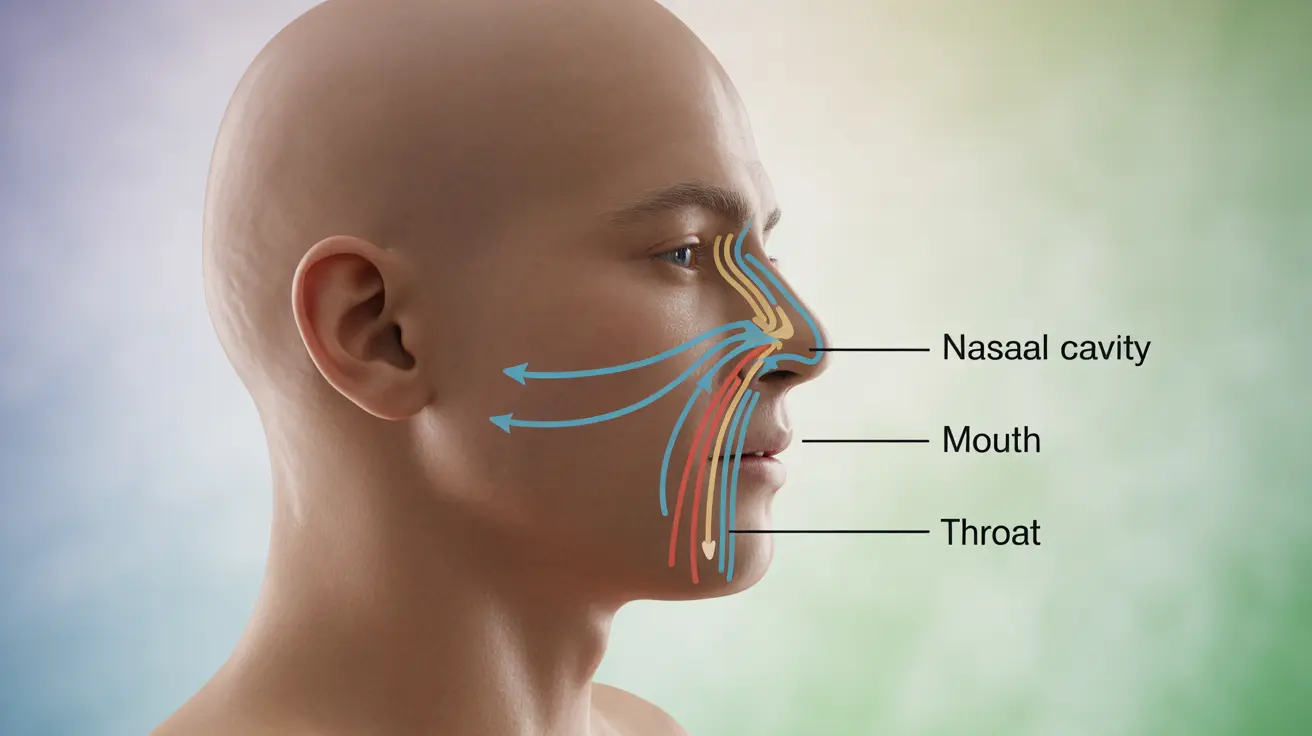Mouth breathing, while a common phenomenon, can significantly impact both oral and overall health when it becomes a chronic habit. This breathing pattern, where air primarily enters through the mouth instead of the nose, may indicate underlying health issues that require attention and proper medical intervention.
Understanding the causes, effects, and treatment options for mouth breathing is crucial for maintaining optimal health and preventing long-term complications. Let's explore this condition in detail and learn how to address it effectively.
Common Causes of Mouth Breathing
Several factors can contribute to mouth breathing, ranging from temporary conditions to chronic health issues:
Nasal Obstruction
Physical blockages in the nasal passages often force individuals to breathe through their mouth. Common causes include:
- Enlarged adenoids or tonsils
- Deviated septum
- Nasal polyps
- Chronic sinus infections
- Allergic reactions
Anatomical Factors
Some people may develop mouth breathing due to structural issues such as:
- Small nostrils
- High palatal vault
- Weak facial muscles
- Misaligned jaw structure
Health Impact of Chronic Mouth Breathing
Persistent mouth breathing can lead to various health complications affecting both children and adults:
Physical Effects
The physical impact of mouth breathing includes:
- Altered facial development in children
- Dry mouth and increased risk of dental problems
- Changes in head and neck posture
- Sleep disturbances and fatigue
Developmental Concerns
In children, chronic mouth breathing may affect:
- Speech development
- Cognitive function
- Academic performance
- Social interaction
Diagnosis and Assessment
Healthcare providers use various methods to diagnose mouth breathing and identify its underlying causes:
Clinical Evaluation
Initial assessment typically includes:
- Physical examination of the nose, throat, and oral cavity
- Assessment of breathing patterns
- Evaluation of facial structure and development
- Review of medical history and symptoms
Specialized Testing
Additional diagnostic procedures may include:
- Sleep studies
- Airflow measurements
- Imaging studies (X-rays or CT scans)
- Allergy testing when relevant
Treatment Approaches
Treatment strategies for mouth breathing focus on addressing the underlying cause and restoring proper nasal breathing:
Medical Interventions
Common medical treatments include:
- Surgical correction of anatomical issues
- Medication for allergies or inflammation
- Treatment of chronic sinus conditions
- Management of enlarged adenoids or tonsils
Therapeutic Options
Supportive therapies may involve:
- Myofunctional therapy exercises
- Orthodontic treatment when needed
- Speech therapy
- Breathing exercises and techniques
Prevention and Home Management
Several strategies can help prevent or manage mouth breathing at home:
- Maintaining good nasal hygiene
- Using appropriate allergy management techniques
- Practicing proper breathing exercises
- Ensuring proper sleeping position
- Regular monitoring of breathing patterns
Frequently Asked Questions
Q: What are the common causes of mouth breathing and how can they be identified?
A: Common causes include nasal obstruction (from allergies, infections, or anatomical issues), enlarged adenoids or tonsils, and structural abnormalities of the nose or jaw. Identification typically involves observing symptoms like dry mouth, snoring, and facial changes, along with professional medical evaluation.
Q: What health problems can result from chronic mouth breathing in children and adults?
A: Chronic mouth breathing can lead to dental problems, facial development issues in children, sleep disorders, cognitive difficulties, speech problems, and changes in head and neck posture. It may also cause chronic fatigue and affect overall quality of life.
Q: How is mouth breathing diagnosed, and what tests might a doctor use to find the cause?
A: Diagnosis typically involves physical examination, assessment of breathing patterns, and evaluation of facial structure. Doctors may use specialized tests like sleep studies, airflow measurements, imaging studies (X-rays or CT scans), and allergy testing to determine the underlying cause.
Q: What treatments are available to stop mouth breathing and improve nasal airflow?
A: Treatment options include surgical procedures to correct anatomical issues, medications for allergies or inflammation, myofunctional therapy, orthodontic treatment, and breathing exercises. The specific treatment depends on the underlying cause.
Q: How can mouth breathing be prevented or managed at home to reduce complications?
A: Prevention and management strategies include maintaining good nasal hygiene, using proper allergy management techniques, practicing breathing exercises, ensuring correct sleeping position, and regular monitoring of breathing patterns. Consistent dental check-ups and following medical advice are also important.




